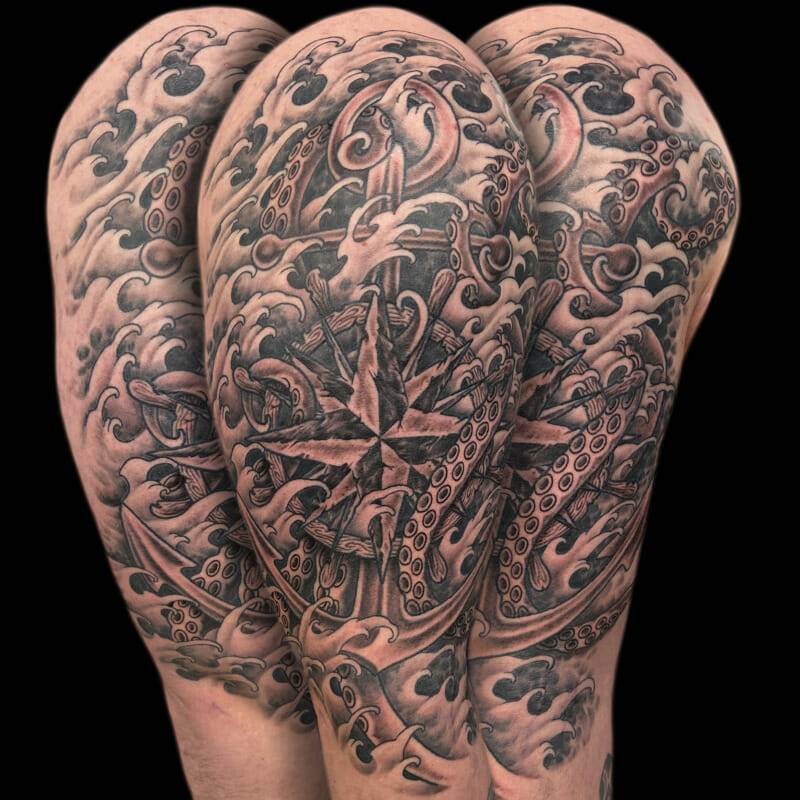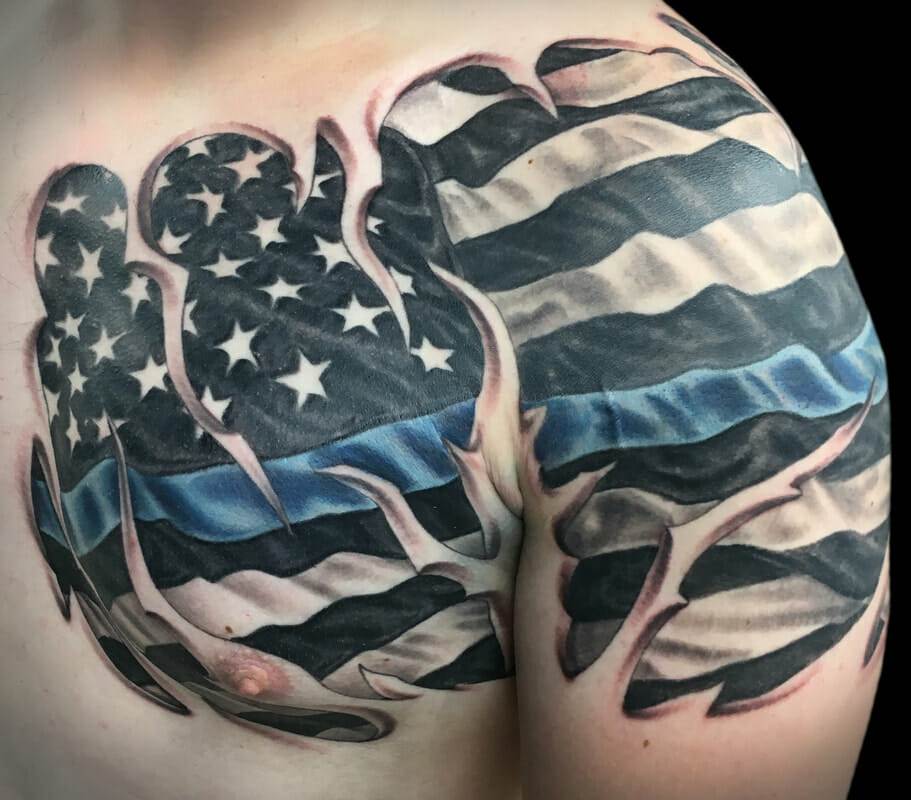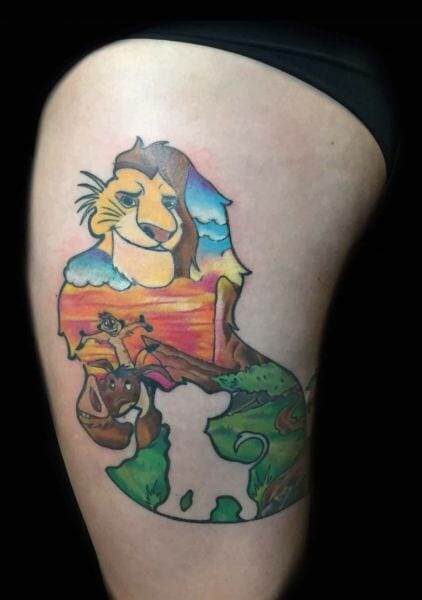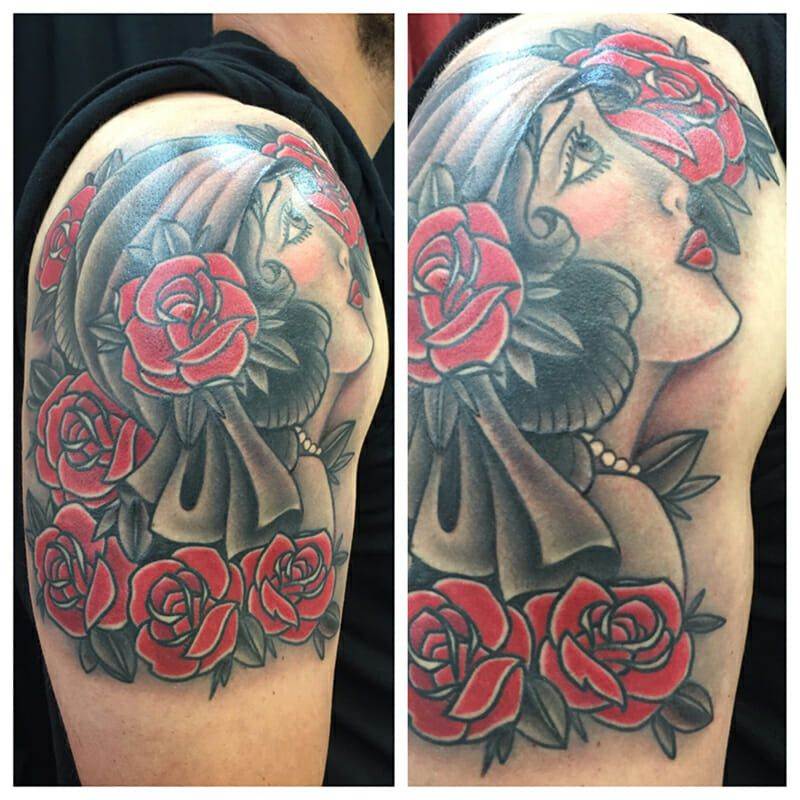Watercolor tattoos are a unique and beautiful form of body art that has been gaining popularity in recent years. Unlike traditional tattoos, which use bold lines and solid colors, watercolor tattoos mimic the fluid and vibrant nature of watercolor paintings. This style of tattooing creates a soft and dreamy effect on the skin, with colors blending seamlessly together to create a stunning work of art.
The rise in popularity of watercolor tattoos can be attributed to several factors. Firstly, they offer a fresh and modern take on traditional tattooing, appealing to those who want something different and unique. Watercolor tattoos also allow for more creativity and artistic expression, as they are not bound by the constraints of traditional tattooing techniques. Additionally, the soft and ethereal look of watercolor tattoos can be incredibly visually appealing, making them a popular choice for those who want a more delicate and feminine tattoo.
What sets watercolor tattoos apart from other styles is their uniqueness. Each watercolor tattoo is one-of-a-kind, as the blending of colors and the way they interact with the skin cannot be replicated exactly. This makes watercolor tattoos truly special and personal to the individual wearing them. The fluidity and unpredictability of watercolor tattoos also adds to their charm, as they can appear different depending on the angle and lighting.
Understanding the Beauty of Color and Contrast in Watercolor Tattoos
Color and contrast play a crucial role in the beauty of watercolor tattoos. The use of vibrant and bold colors is what gives these tattoos their distinct look. When choosing colors for a watercolor tattoo, it is important to consider how they will interact with each other and how they will complement the skin tone.
Contrast is also essential in creating a visually striking watercolor tattoo. By using contrasting colors, such as pairing warm tones with cool tones or light colors with dark colors, artists can create depth and dimension in the tattoo. This contrast helps to bring the design to life and make it more visually interesting.
Achieving a watercolor effect in a tattoo requires a skilled artist who understands how to blend colors and create a seamless transition between them. This technique involves using different shades and tones of the same color to create a gradient effect, as well as layering colors on top of each other to create depth. The artist must also have a good understanding of color theory and how different colors interact with each other to create harmonious compositions.
The History and Evolution of Watercolor Tattoos
The origins of watercolor tattoos can be traced back to the early 20th century, when artists began experimenting with different techniques and styles of tattooing. However, it wasn’t until the 1980s and 1990s that watercolor tattoos started gaining popularity. Artists like Amanda Wachob and Ondrash were among the first to popularize this style, pushing the boundaries of traditional tattooing and introducing a new form of artistic expression.
Since then, watercolor tattoos have continued to evolve and grow in popularity. Today, there are countless talented artists around the world who specialize in this style, each bringing their own unique approach and artistic vision to their work. Watercolor tattoos have become more refined and intricate, with artists incorporating elements of realism, surrealism, and abstract art into their designs.
Famous artists such as Sasha Unisex, Jay Freestyle, and Klaim have made significant contributions to the art form, pushing the boundaries of what is possible with watercolor tattoos. Their innovative techniques and stunning designs have inspired countless artists and enthusiasts alike.
Choosing the Right Design for a Watercolor Tattoo
When choosing a design for a watercolor tattoo, there are several factors to consider. Firstly, it is important to choose a design that you connect with on a personal level. A tattoo is a permanent piece of art on your body, so it should have meaning and significance to you. Whether it’s a symbol that represents something important to you or a design that simply resonates with your aesthetic preferences, choosing a design that speaks to you is essential.
Popular designs for watercolor tattoos include flowers, animals, landscapes, and abstract shapes. These designs lend themselves well to the fluid and vibrant nature of watercolor tattoos. However, it is important to remember that the possibilities are endless when it comes to watercolor tattoos, and any design can be transformed into a beautiful watercolor piece.
Personalizing a design is another important aspect of choosing the right design for a watercolor tattoo. Adding elements that are meaningful to you, such as initials, dates, or quotes, can make the tattoo even more special and unique. Collaborating with your tattoo artist and discussing your ideas and preferences can help ensure that the final design is exactly what you envision.
The Process of Creating a Watercolor Tattoo: From Sketch to Skin

Creating a watercolor tattoo is a multi-step process that involves collaboration between the artist and the client. It starts with a consultation, where the artist and client discuss the design, placement, and size of the tattoo. The artist may also ask for any reference images or inspiration that the client has.
Once the design is finalized, the artist will create a sketch of the tattoo. This sketch serves as a blueprint for the final tattoo and allows the client to visualize how the design will look on their body. The artist may make adjustments to the sketch based on the client’s feedback.
On the day of the tattoo session, the artist will prepare the skin by cleaning and shaving the area. They will then transfer the sketch onto the skin using a stencil or freehand technique. Once the stencil is in place, the artist will begin tattooing, starting with outlining the design and then filling in the colors.
During the tattooing process, it is important for clients to communicate any discomfort or pain they may be experiencing. The artist may need to make adjustments to ensure that the client is comfortable throughout the session. Depending on the size and complexity of the design, multiple sessions may be required to complete the tattoo.
Caring for Your Watercolor Tattoo: Tips and Best Practices
Proper aftercare is essential for ensuring that your watercolor tattoo heals properly and maintains its vibrancy. Here are some tips for caring for your watercolor tattoo:
1. Follow your artist’s instructions: Your tattoo artist will provide you with specific aftercare instructions tailored to your tattoo. It is important to follow these instructions carefully to ensure proper healing.
2. Keep it clean: Gently wash your tattoo with mild soap and warm water, using your hands or a clean, soft cloth. Avoid scrubbing or rubbing the tattoo, as this can cause irritation.
3. Moisturize regularly: Apply a thin layer of fragrance-free, non-comedogenic moisturizer to your tattoo to keep it hydrated. Avoid using petroleum-based products, as they can clog pores and hinder the healing process.
4. Avoid direct sunlight: Protect your tattoo from direct sunlight, as UV rays can fade the colors and cause the tattoo to blur over time. If you need to be in the sun, apply a broad-spectrum sunscreen with a high SPF to your tattoo.
5. Avoid soaking: Avoid soaking your tattoo in water, such as swimming pools, hot tubs, or baths, until it is fully healed. Excessive moisture can cause the colors to bleed and fade.
6. Be patient: It takes time for a watercolor tattoo to fully heal and for the colors to settle. Be patient and avoid picking at scabs or scratching the tattoo, as this can cause damage and affect the final result.
Popular Watercolor Tattoo Styles and Trends
Watercolor tattoos come in various styles, each with its own unique characteristics and aesthetic appeal. Some popular styles of watercolor tattoos include:
1. Floral watercolor tattoos: Flowers are a popular choice for watercolor tattoos due to their natural beauty and versatility. Floral watercolor tattoos can range from delicate and realistic roses to abstract and vibrant wildflowers.
2. Animal watercolor tattoos: Animal-themed watercolor tattoos are another popular choice, allowing individuals to showcase their love for their favorite animals. From majestic lions to graceful birds, animal watercolor tattoos can be both visually stunning and meaningful.
3. Landscape watercolor tattoos: Landscape watercolor tattoos capture the beauty of nature in all its glory. From serene mountainscapes to breathtaking sunsets, these tattoos evoke a sense of wanderlust and adventure.
As with any form of art, watercolor tattoo styles and trends are constantly evolving. Staying up-to-date with the latest styles and trends can help you find inspiration for your own watercolor tattoo. Following tattoo artists on social media platforms, attending tattoo conventions, and browsing through tattoo magazines are great ways to stay informed about the latest watercolor tattoo styles and trends.
Watercolor Tattoos vs. Traditional Tattoos: Pros and Cons
Watercolor tattoos and traditional tattoos each have their own unique pros and cons. Understanding these differences can help you decide which style is right for you.
Pros of watercolor tattoos:
– Unique and visually striking: Watercolor tattoos offer a distinct and eye-catching look that sets them apart from traditional tattoos.
– More artistic freedom: Watercolor tattoos allow for more creativity and artistic expression, as they are not bound by the constraints of traditional tattooing techniques.
– Soft and delicate appearance: The soft and dreamy look of watercolor tattoos can be incredibly visually appealing, especially for those who prefer a more delicate and feminine aesthetic.
Cons of watercolor tattoos:
– Fading over time: Watercolor tattoos are more prone to fading compared to traditional tattoos, as the colors are not as deeply saturated into the skin.
– Less longevity: Due to the nature of watercolor tattoos, they may not last as long as traditional tattoos. Touch-ups may be required more frequently to maintain the vibrancy of the colors.
– Limited detail: Watercolor tattoos may not be suitable for highly detailed designs, as the blending of colors can make intricate details less visible.
Pros of traditional tattoos:
– Longevity: Traditional tattoos are known for their longevity, with colors remaining vibrant for many years.
– Versatility: Traditional tattoos can accommodate a wide range of designs, from simple symbols to intricate portraits.
– Timeless appeal: Traditional tattoos have stood the test of time and continue to be a popular choice among tattoo enthusiasts.
Cons of traditional tattoos:
– Limited artistic freedom: Traditional tattoos are bound by certain techniques and styles, which may not allow for as much creativity and artistic expression.
– Bold and solid appearance: Traditional tattoos use bold lines and solid colors, which may not appeal to those who prefer a softer and more delicate look.
– Pain and discomfort: Traditional tattoos can be more painful to get compared to watercolor tattoos, as they often require more shading and lining.
Ultimately, the choice between watercolor tattoos and traditional tattoos comes down to personal preference. It is important to consider your aesthetic preferences, the design you have in mind, and the level of commitment you are willing to make in terms of touch-ups and aftercare.
The Symbolism and Meaning Behind Watercolor Tattoos
Watercolor tattoos can have symbolic meaning, just like any other form of body art. The symbolism behind a watercolor tattoo can vary depending on the design and the individual wearing it. Here are some popular symbols and meanings associated with watercolor tattoos:
1. Flowers: Flowers are often associated with beauty, growth, and transformation. Different flowers have different meanings, such as roses symbolizing love and passion, lotus flowers representing enlightenment and spiritual growth, and sunflowers symbolizing happiness and positivity.
2. Birds: Birds are often associated with freedom, independence, and spirituality. They can also symbolize a sense of wanderlust and the desire for adventure.
3. Water: Water is a powerful symbol of life, purification, and renewal. It can represent emotions, intuition, and adaptability.
4. Butterflies: Butterflies are often associated with transformation, growth, and rebirth. They can symbolize personal growth, resilience, and the beauty of change.
When choosing a design for a watercolor tattoo, it is important to consider the symbolism behind the elements you choose. Selecting symbols that hold personal significance to you can make the tattoo even more meaningful and special.

The Timeless Beauty of Watercolor Tattoos
Watercolor tattoos are a timeless art form that combines the beauty of watercolor paintings with the permanence of tattoos. Their unique and ethereal look has captivated the hearts of many tattoo enthusiasts, making them a popular choice for those who want something different and visually striking.
The beauty of watercolor tattoos lies in their ability to evoke emotions and tell stories through vibrant colors and fluid lines. Each watercolor tattoo is a work of art, created with care and precision by skilled artists who understand the intricacies of this style.
Whether you choose a floral watercolor tattoo, an animal-themed design, or a landscape-inspired piece, watercolor tattoos have the power to transform your body into a canvas of self-expression. They can be a meaningful and beautiful addition to your body art collection, serving as a reminder of your personal journey, values, and aspirations.
In conclusion, watercolor tattoos offer a unique and visually stunning alternative to traditional tattoos. With their soft and dreamy appearance, vibrant colors, and fluid lines, watercolor tattoos have become a popular choice for those who want to express their individuality and creativity through body art. Whether you choose a design with personal significance or simply appreciate the beauty of this art form, watercolor tattoos are sure to leave a lasting impression.



